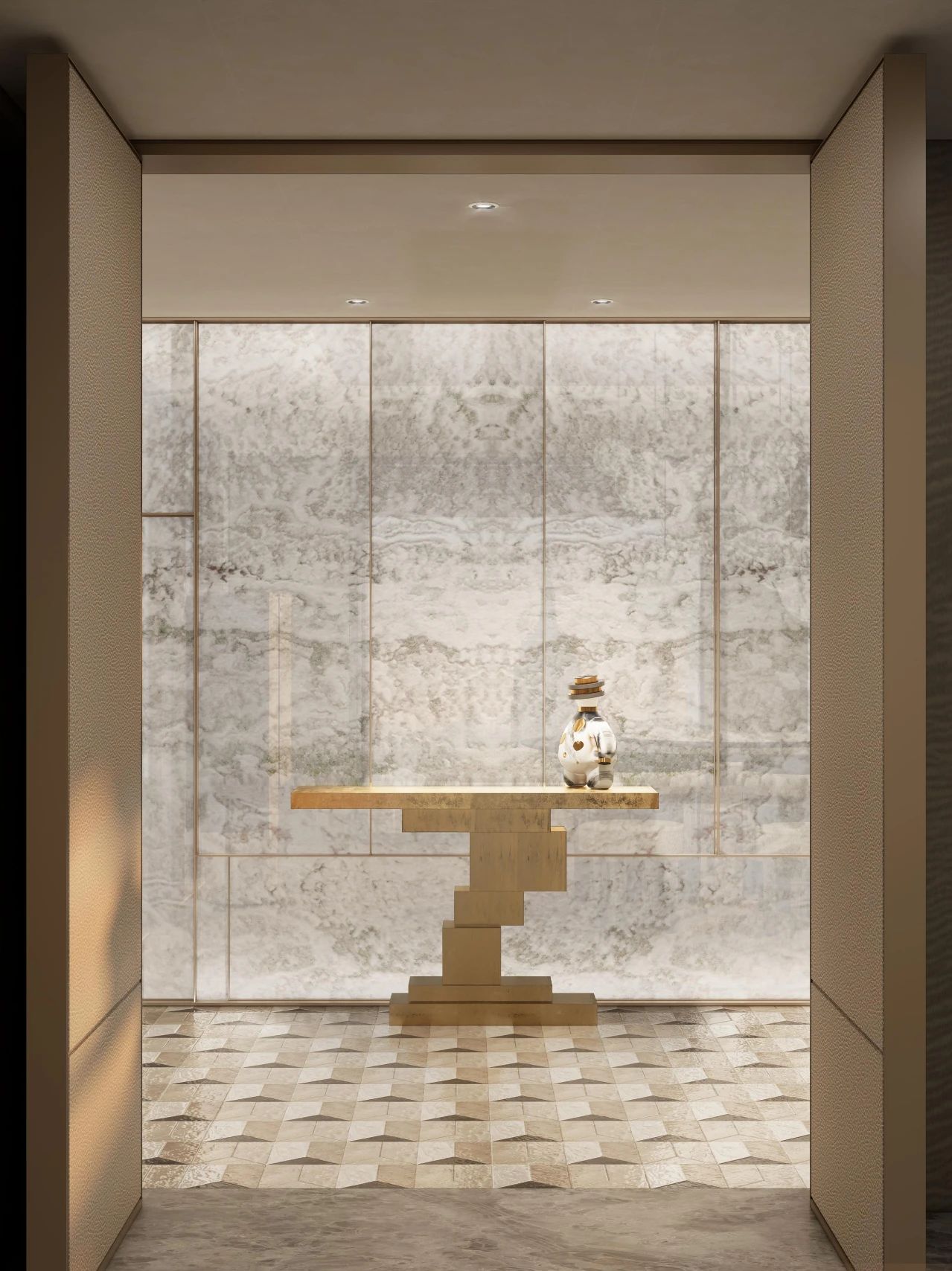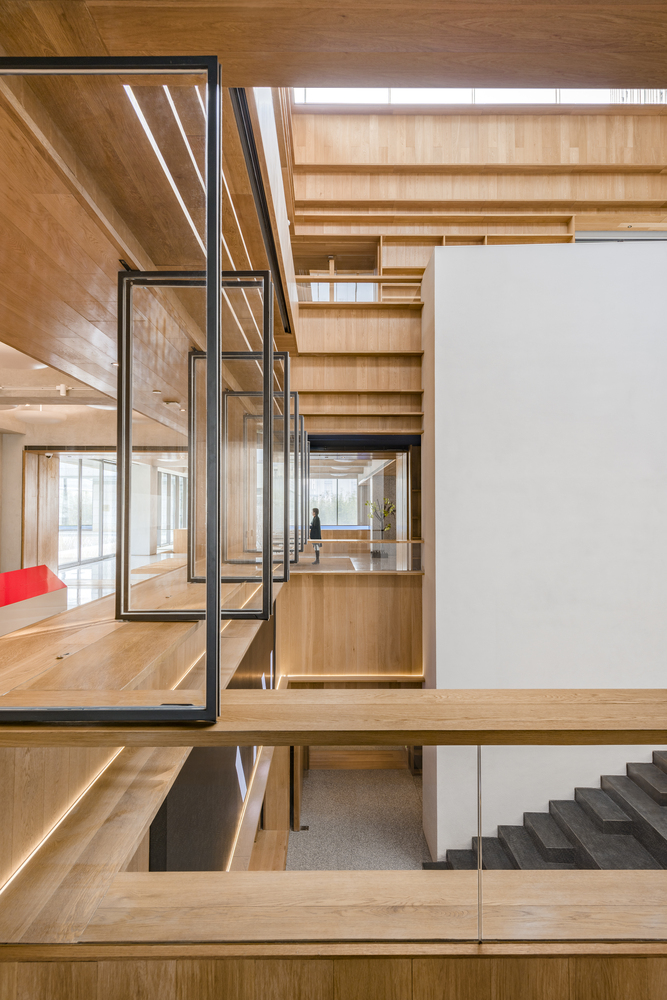House 1 Isurunath Pramitha Associates
2014-03-10 01:00
© Eresh Weerasuriya
(Eresh Weerasuriya)




在它的原则谦逊和极简,这个典型的立方体样的住所为一个标准的无缝空间的概念,在一个受约束的城市环境。白天,房子散发着朴素的气息,外表也很朴素。然而,在晚上,房子变成了一个城市的“灯笼”,散发着微妙的光;通过复杂处理的开窗,被照亮的内部变得可见于外部。这种二元性赋予了建筑一种戏剧元素。然而,在风格上,这所房子既不是有机的,也不是乡土的传统,而是对气候和城市环境的合乎逻辑的反应。
Unassuming and minimalist in its principles, this quintessentially cube-like abode sets a criterion for the conception of seamless space in a constrained urban environment. During the daytime the house exudes simplicity and is modest in appearance. At night, however, the house is transformed into an urban “lantern” emitting subtle light; the illuminated interior becomes visible to the outside through intricately treated fenestration. This duality confers an element of drama on the building. Stylistically, however, the house reflects neither the organic nor the vernacular tradition but is a logical response to climate and urban setting.
© Eresh Weerasuriya
(Eresh Weerasuriya)


由于10英尺的挫折和不到3.5个立面的建筑足迹的限制,位于科胡韦拉的伍德兰大道的6.79个栖息点受到了空间的限制。客户想要一间有自然照明和空间的四卧室房子似乎几乎是不可能的。然而,通过隐藏梁,柱隐藏在墙壁和创造大开口的外部,一个明确的空间进展已经实现。从内部体验,房子与室外自然环境的互动是显而易见的。
With limitations of a10-foot setback and a building footprint of less than 3.5 perches, the 6.79 perch site located in Woodland Avenue, Kohuwela, is constrained for space. The client’s requirement of a four bedroom house with natural lighting and space seemed a near impossibility. However, through concealment of beams, columns hidden within walls and creation of large openings to the exterior an articulate progression of spaces has been achieved. Experienced from the inside, the house’s interaction with the outdoor natural environment is evident.
© Eresh Weerasuriya
(Eresh Weerasuriya)


在地面层面,生活和餐饮空间与从它延伸出来的前后梯田融合在一起。通过使用大的透明玻璃滑动窗,可以看到内部木地板继续进行外部铺装,从而使内部-外部分隔最小化-在水平上没有差别。因此,在一个娱乐的夜晚,人们可以利用露台作为客厅的延伸,因为这两个空间在视觉和物质上都是一体的。
At ground level the living and dining spaces fuse with the front and rear terraces that extend from it. The inside-outside separation has been minimised through the use of large clear glass sliding windows through which one sees the internal timber floor continuing to the exterior decking – with no differences in levels. On an evening of entertainment, therefore, one could utilize the terraces as an extension of the living area since both spaces are visually and materially integrated.
© Eresh Weerasuriya
(Eresh Weerasuriya)


中央楼梯井是所有其他空间组织起来的关键要素。楼梯间上方的玻璃天窗带来自然光线,透过开放的楼梯潜移默化地进入较低的层次,创造了不断的光线和阴影,丰富了单色的白色空间。楼梯井也充当空气漏斗。
The central stairwell is the pivotal element around which all the other spaces are organized. The glass skylight above the stairwell brings in natural light which subtly percolates down through the open stairs to the lower levels, creating a constant play of light and shadow that enriches the monochrome white spaces. The stairwell also acts as an air funnel.
© Eresh Weerasuriya
(Eresh Weerasuriya)


紫外线涂层玻璃屋顶的两端开放,空气出口,有助于真空效应,因为负压是在这一水平,因为温暖的空气从较低的水平上升,并不断冷却的建筑物。这是屋内主要的气候调节装置。
The UV-coated glass roof open at the ends for air to exit, contributes to a vacuum effect due to negative pressure being created at this level on account of warm air rising up from the lower levels and constantly cooling the building. This functions as the main climate regulating device in the house.
© Eresh Weerasuriya
(Eresh Weerasuriya)


一楼电视兼家庭房是繁忙工作日结束时放松的地方。
The first floor TV cum family room is a place for unwinding at the end of the busy workday.
© Eresh Weerasuriya
(Eresh Weerasuriya)


由于这一空间看到的主要道路,开窗必须处理双过滤层的玻璃和百叶窗。两者都为用户提供了不同级别的隐私和通风的选择。卧室,包括主卧室,有附加的露台,是为了保护隐私而设的。
Since this space looks on to the main road, the fenestration had to be treated with dual filtering layers of glazing and louvers. Both offer options for varying levels of desired privacy and ventilation for the user. The bedrooms, inclusive of the master bedroom, have attached terraces that are screened for privacy.
© Eresh Weerasuriya
(Eresh Weerasuriya)


玻璃滑动门提供了一个机会,以融合梯田与内部。这使得房间的空间可以毫不费力地扩展到室外露台上。一个额外的特点是屋顶顶部露台与其不引人注目的种植:一个安静的花园空间已经在这里创造了与自然接触。
The glazed sliding doors provide an opportunity to amalgamate the terraces with the interior. This enables the spaces of the rooms to spill out effortlessly on to the outdoor terraces. An added feature is the roof top terrace with its unobtrusive planting: a quiet garden space has been created here to engage with nature.
© Eresh Weerasuriya
(Eresh Weerasuriya)


所使用的材料,库姆布克河的富丽堂皇的黑色和棕色,剥落的柚木,地板的水泥色调,百叶窗和窗户的灰色,在白色墙壁的衬托下,柔和地从外面发出刺眼的白光,营造出一种富饶而平静的氛围。
The materials used, the rich black and tan of the Kumbuk, the ochered Teak, cement shades of the floor and the grays of the louvers and window, stand out against the white walls softening the harsh white light from the outside to create a rich and quietly glowing ambience.
最终产品在其褶皱中统一了“极简主义”和“炫耀”这两个相互排斥的概念。这是当代空间的一个优雅的例子,它以一种功能和美观的方式超越了编程需求。
The end product unifies within its folds the two mutually exclusive concepts of “minimalist” and “ostentatious. It is an elegant example of contemporary space that has transcended programmatic requirements in a manner that is both functional and aesthetically pleasing.












































Architects Isurunath Pramitha Associates
Location Colombo, Sri Lanka
Category Houses
Architect in Charge S.W. Isurunath Bulankulame
Area 3600.0 ft2
Project Year 2013
Photographs Eresh Weerasuriya
























